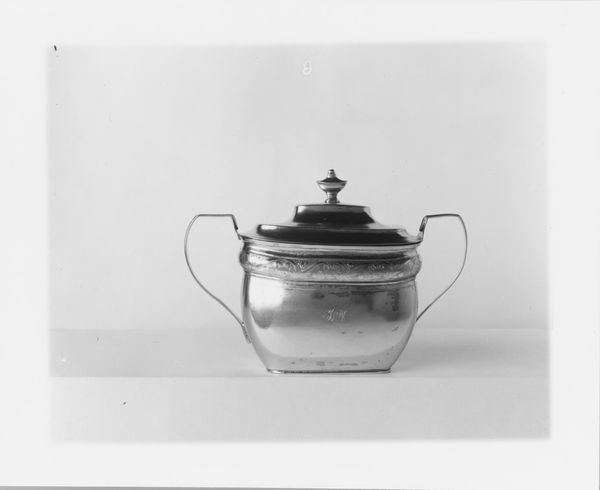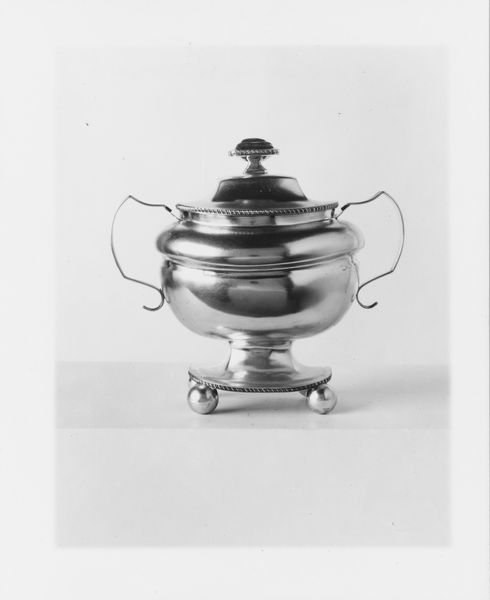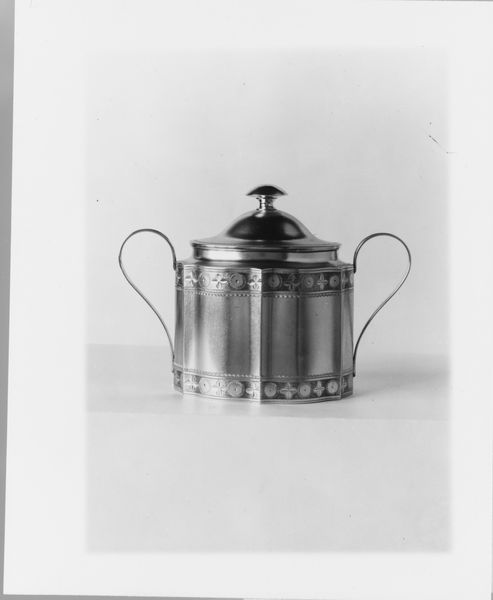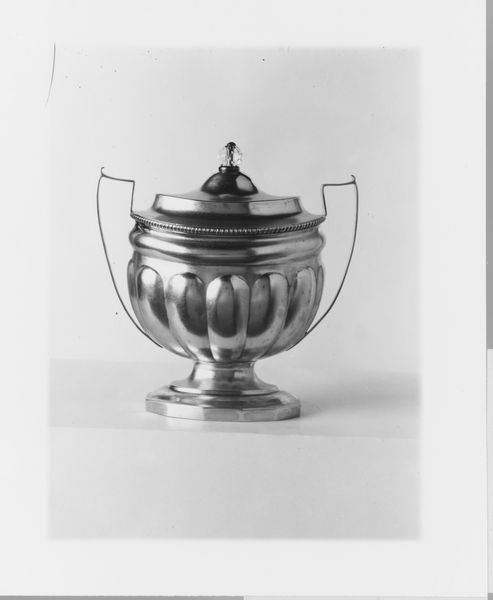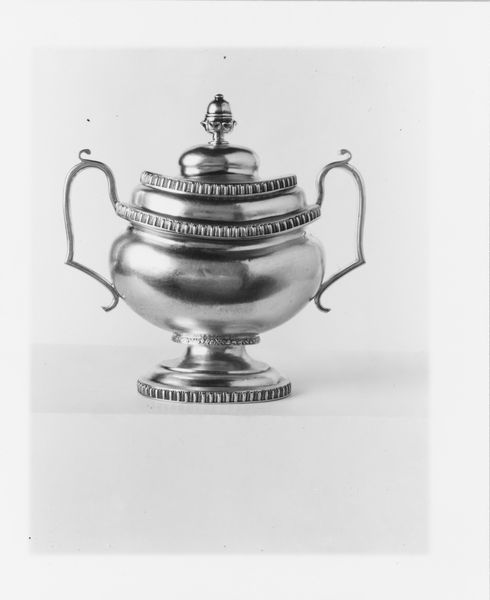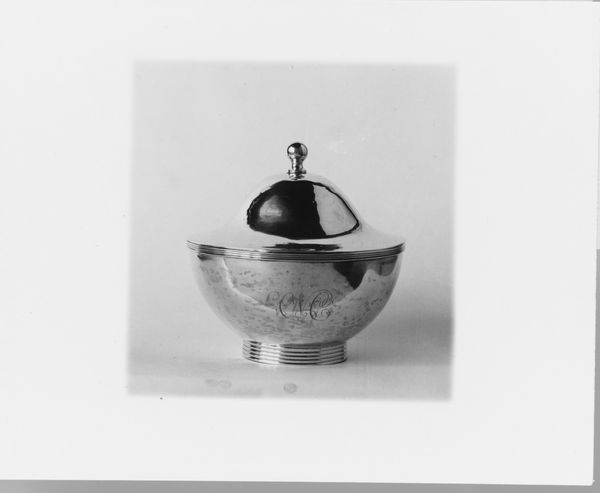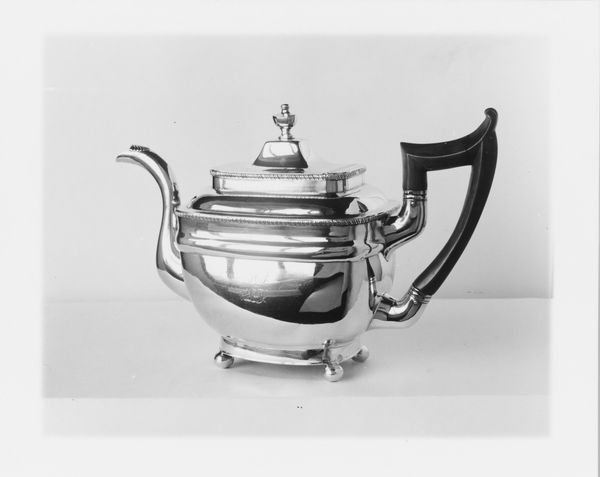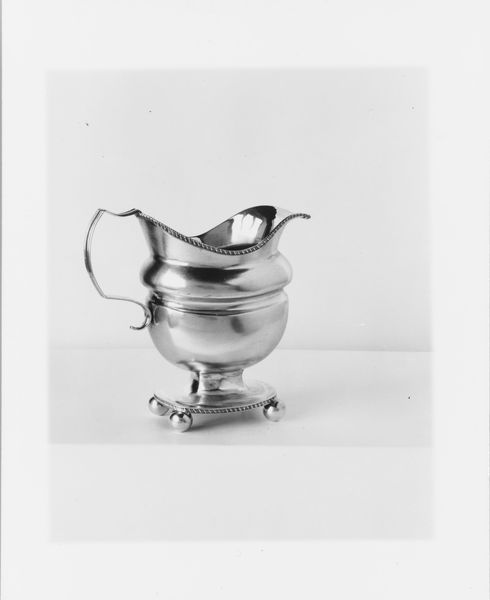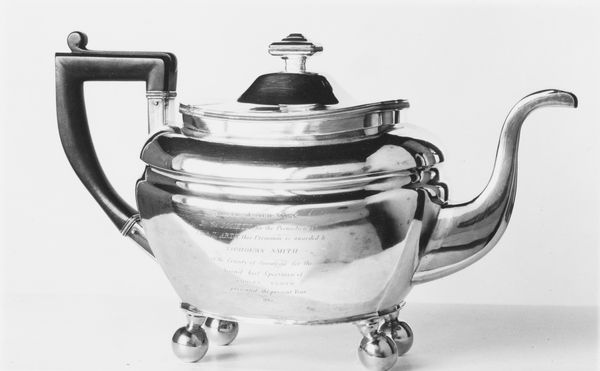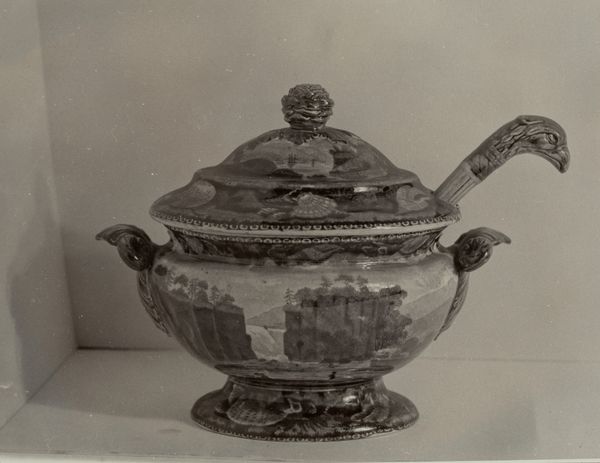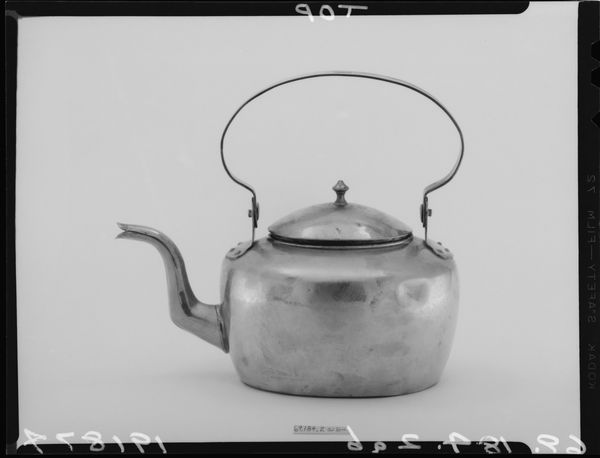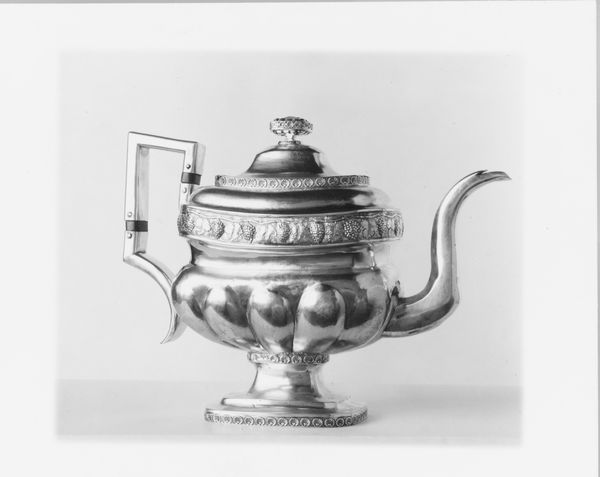
silver, metal
#
silver
#
metal
#
black and white
#
monochrome
#
monochrome
Dimensions: Overall: 7 x 9 3/8 x 4 3/4 in. (17.8 x 23.8 x 12.1 cm); 20 oz. 9 dwt. (635.3 g) Body: H. 6 in. (15.2 cm); 15 oz. 7 dwt. (478 g) Cover: 2 1/8 x 6 5/8 x 4 3/4 in. (5.4 x 16.8 x 12.1 cm); 5 oz. 1 dwt. (157.3 g)
Copyright: Public Domain
Editor: This is a silver sugar bowl made sometime between 1810 and 1820. The photo’s monochrome, but it still appears quite ornate and classical in style. I’m struck by the intricate decorations. What draws your eye when you look at it? Curator: My focus goes to the details. Look closely; it isn't just decoration. It's a statement. The repetitive floral motifs speak to a desire for order and refinement. Sugar itself was a symbol of wealth, its careful presentation mirroring societal aspirations. Consider: what deeper longings might such elaborate display have been meant to satisfy? Editor: Longings? You mean beyond just showing off wealth? Curator: Exactly. Think about it psychologically. The act of meticulously crafting and presenting something, especially something commonplace like sugar, could be interpreted as a way to impose control on the world, or perhaps to create a sense of stability amidst societal changes. The classical motifs hark back to a perceived golden age, offering an imagined escape. What do these repetitive, ordered designs evoke for you? Editor: I see what you mean. Maybe a desire for a simpler, more elegant time, or some sort of perfect life? It does seem like more than just a bowl for sugar now. Curator: Precisely. Each element, each symbol, holds a piece of the past and hints at enduring human desires. Now, thinking about the era this piece was made in, how might global trade influence its importance? Editor: That's fascinating; I'll definitely look into how trade affected even the smallest parts of people's lives. Thanks for the insightful points; I’ll never see something this ordinary the same way. Curator: Indeed! Each piece, mundane or grand, carries echoes of culture. The next time you see a common object, look beyond its use, and see what stories it carries!
Comments
No comments
Be the first to comment and join the conversation on the ultimate creative platform.
